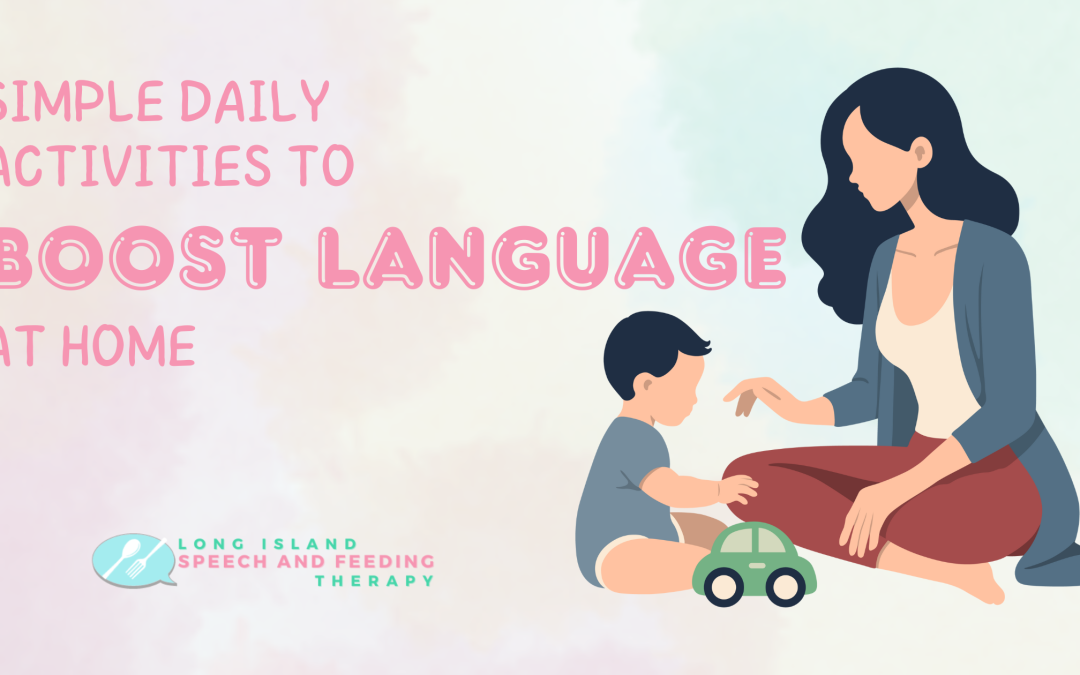As parents, we all want to support our children’s language development, but with busy schedules, it can feel overwhelming. The good news? You don’t need fancy toys or structured lessons to help your child grow their communication skills! Everyday interactions and simple activities can make a big difference. Here are practical, easy-to-implement strategies to boost language at home.
1. Talk Throughout the Day
Narrate your daily routines! Whether you’re making breakfast, getting dressed, or driving to the store, describe what you’re doing. For example: “Now we’re putting on your socks. One sock, two socks! Socks keep our feet warm.” This constant exposure to language helps build vocabulary and comprehension.
2. Read Together Every Day
Reading is one of the best ways to build language skills. Choose books with colorful pictures and simple, repetitive language. Pause to ask questions (“What do you see?”), label objects, and encourage your child to point or imitate sounds. Even a few minutes a day makes a difference!
3. Sing Songs and Nursery Rhymes
Music and rhythm help with language learning. Sing familiar songs like Twinkle, Twinkle Little Star or make up silly songs about your daily routine. Clapping, dancing, and hand motions add an interactive element that enhances comprehension.
4. Encourage Turn-Taking in Conversations
Give your child opportunities to take turns during interactions. If they babble or say a word, respond and wait for them to continue. Simple back-and-forth exchanges, even with gestures, lay the foundation for conversation skills.
5. Play with Purpose
Pretend play, building blocks, and interactive games provide natural opportunities for language development. While playing, label objects, describe actions (“You’re building a tall tower!”), and introduce new words in context.
6. Use Everyday Items to Expand Vocabulary
Household objects make great learning tools. During bath time, name and describe toys (“The duck is yellow! The water is warm.”). While cooking, talk about ingredients (“This apple is crunchy and sweet.”). These simple interactions introduce new words naturally.
7. Limit Screen Time and Encourage Interaction
While some educational shows can be beneficial, active engagement with people is the best way to develop language skills. Prioritize face-to-face communication, reading, and play over screen time.
8. Follow Your Child’s Lead
Observe what interests your child and talk about it. If they point at a dog, describe it (“That’s a big, brown dog! He’s running fast!”). Expanding on their interests keeps them engaged and encourages more communication.
9. Use Gestures and Expressions
Gestures like waving, pointing, or clapping help reinforce communication. Encourage your child to use gestures along with words to express their wants and needs.
10. Be Patient and Have Fun!
Language learning is a process, and every child develops at their own pace. Make it fun, celebrate small milestones, and create a language-rich environment with lots of positive interactions.
By incorporating these simple strategies into your daily routine, you’ll help foster your child’s language development in a natural and stress-free way. Remember, YOU are your child’s best teacher!

